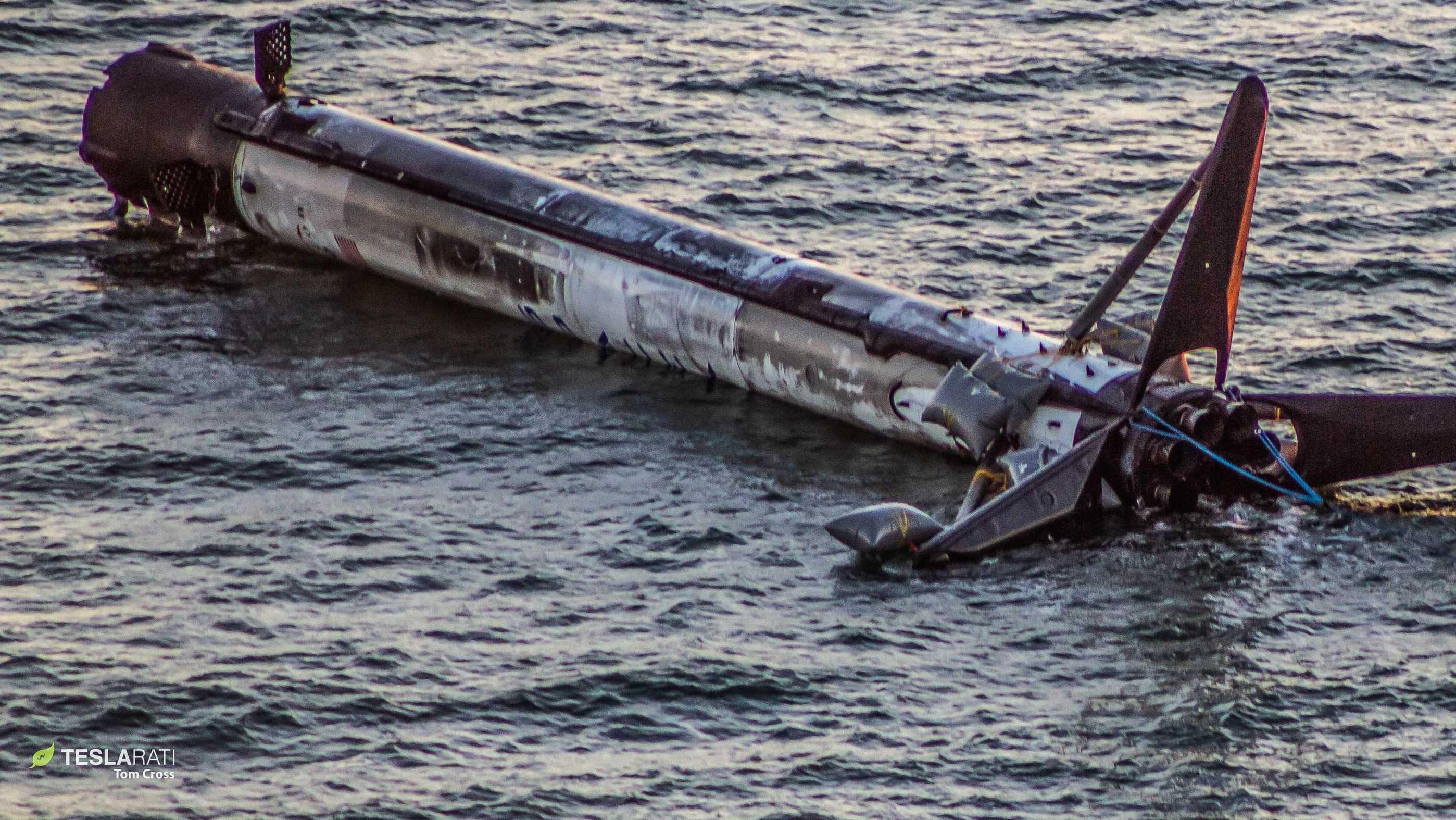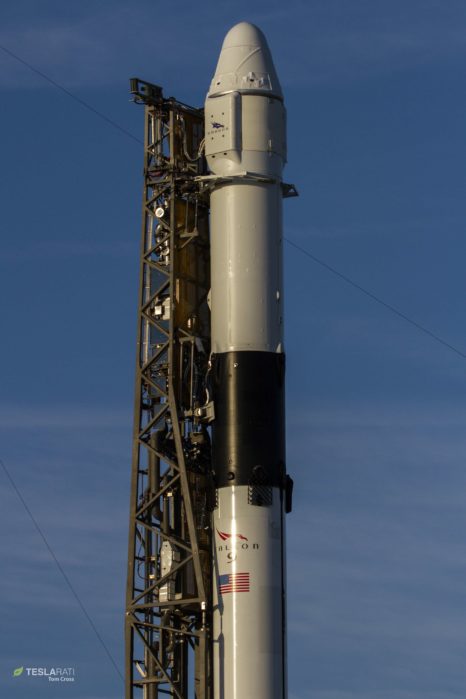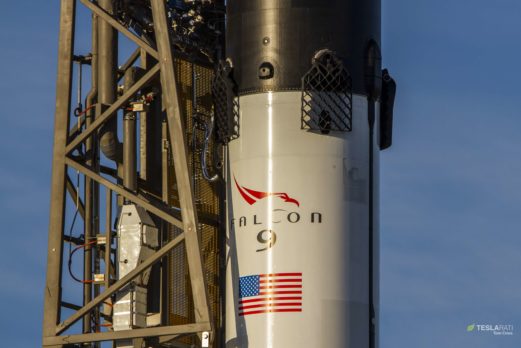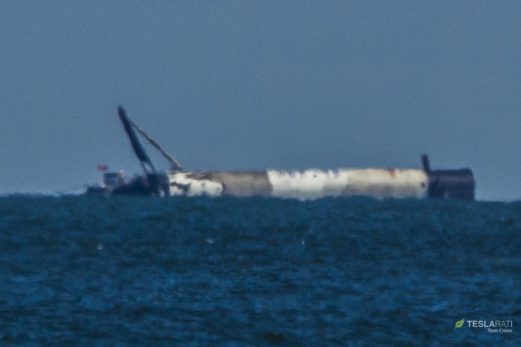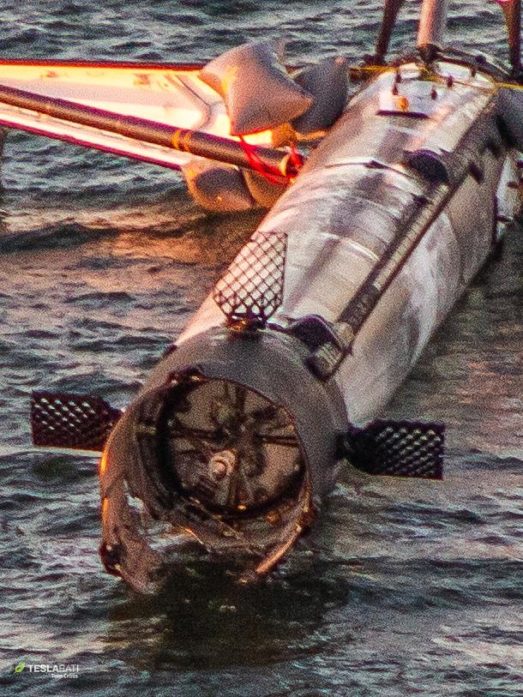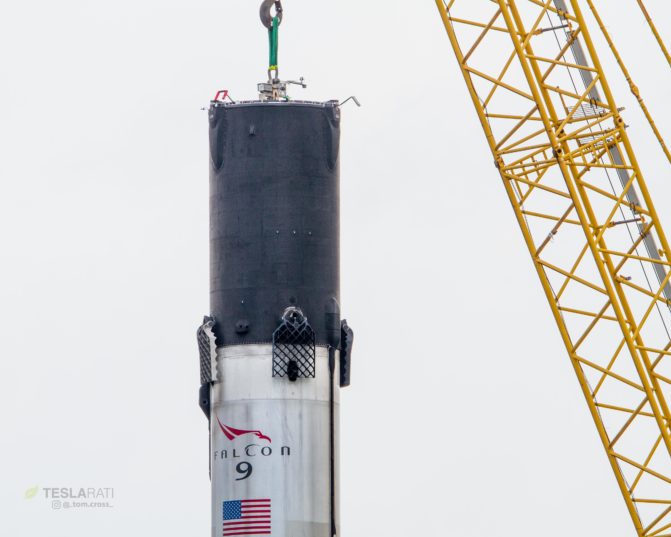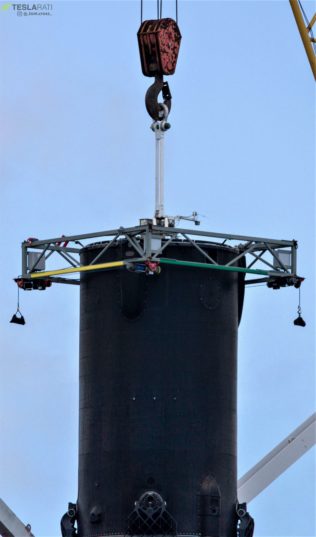Shortly after successfully sending a reused Cargo Dragon spacecraft on its way towards the International Space Station (ISS), SpaceX Falcon 9 Block 5 booster B1050 experienced an anomaly with its grid fins during a planned landing, resulting in a shockingly soft (but unintentional) landing just off the Florida coast.
By some minor miracle, the drastically off-nominal loads experienced by the booster during its unintended departure from controlled flight somehow did not rise to the bar of structural failure. Nevertheless, now floating a handful of miles east of Port Canaveral’s mouth, B1050 did not make it through the ordeal unscathed.
Booster 1050 bobbing in the Atlantic a day after CRS-16. This is the view from @jettypark. @Teslarati @SpaceX #falcon9 #rocketship pic.twitter.com/63z9mS8VO4
— TomCross (@_TomCross_) December 6, 2018
A little more than 24 hours after the booster found itself floating sideways in the Atlantic Ocean, B1050 had floated a solid ten miles south of its original position into waters and airspace that no longer fell under the purview of Cape Canaveral Air Force Station, technically a military outpost. As the captains of tugboat Eagle and SpaceX support vessel GO Quest discussed the logistics of returning the booster to port with the local harbormaster and US Coast Guard, Teslarati photographer Tom Cross chartered a local helicopter to get a slightly better view of the waterlogged rocket and its ad-hoc recovery operations.
A casualty of war (with the air)
Second only to the fact that the booster appears to be in disproportionately good shape considering the circumstances, by far the most noteworthy feature of the newest addition to SpaceX’s marine fleet is the sheer damage suffered by B1050’s interstage, the black carbon fiber composite structure that topsFalcon 9 Block 5 boosters and hosts its grid fins and stage separation mechanism.
Revealed from an aerial perspective, it almost looks as if one side of the composite cylinder was smashed with a giant hammer, tearing off at least 20% of the entire interstage – including one of four titanium grid fins – while leaving another large segment hanging on by only partially-figurative carbon fiber threads.
It’s not 100% clear why B1050’s interstage was so readily destroyed but a narrative can certainly be drawn from the current public record. After its grid fins lost hydraulic power and became stuck at an extreme angle, B1050 almost immediately lost control and began rapidly and quite brutally spinning and flailing, tossed around as it hurtled through the air at supersonic speeds. Being a predominately smooth cylinder, Falcon 9’s first stage is inherently prone to rotation in the presence of high-velocity air currents, which is why its grid fins are an absolute necessity for maintaining control authority during in-atmosphere “flights”.
Engines stabilized rocket spin just in time, enabling an intact landing in water! Ships en route to rescue Falcon. pic.twitter.com/O3h8eCgGJ7
— Elon Musk (@elonmusk) December 5, 2018
In a show that will turn the stomach of anyone familiar with a rocket’s typically narrow load tolerances, Falcon 9 B1050 experienced extreme aerodynamic stresses during the worst of its uncontrolled tumble, to the extent that the entire booster and interstage can be seen visibly twisting at least 5 degrees left and right from the perspective of an onboard camera. In the video above, focus on the center of Falcon 9’s grid fins during the first and last 5-10 seconds to properly visualize the extreme forces at play.
It might look fairly innocent to the untrained eye, but keep in mind that Falcon 9’s interstage is no more than a couple of inches thick and is absolutely massive, stretching 3.7m (~12 ft) in diameter. Perhaps even more importantly, the damage to the interstage has almost without a doubt rendered it unusable from the perspective of SpaceX’s established methods of safely moving and manipulating Falcon 9 boosters.
All of those methods rely on adapters that attach to the interstage to lift the rocket vertically or support part of its ~30-ton dry mass horizontally. Lacking a sound interstage, it’s now entirely unclear how SpaceX might go about getting B1050 onto land without damaging it further. In simpler terms, this bodes very, very badly for any plans to safely reuse B1050 in the near (or distant) future. After suffering loads that severely weakened and ultimately tore its interstage to pieces, it’s reasonable to assume that the rest of the rocket’s lithium-aluminum propellant tanks experienced stresses that are at least roughly comparable.
If that’s the case, perhaps the only real hope for B1050’s ‘reuse’ will be the recovery of certain subcomponents and miscellaneous parts that may have made it through the ordeal unscathed or with only minor damage. The three remaining titanium grid fins are a guaranteed recovery, while COPVs, cold gas thrusters, avionics boxes, and maybe even some of its nine Merlin 1D engines could be salvageable with some level of refurbishment.
In the meantime, the tentative plan right now is to two B1050 into Port Canaveral sometime after dawn tomorrow, either ending up at drone ship OCISLY’s berth or another less-developed section of the port.
For prompt updates, on-the-ground perspectives, and unique glimpses of SpaceX’s rocket recovery fleet check out our brand new LaunchPad and LandingZone newsletters!

